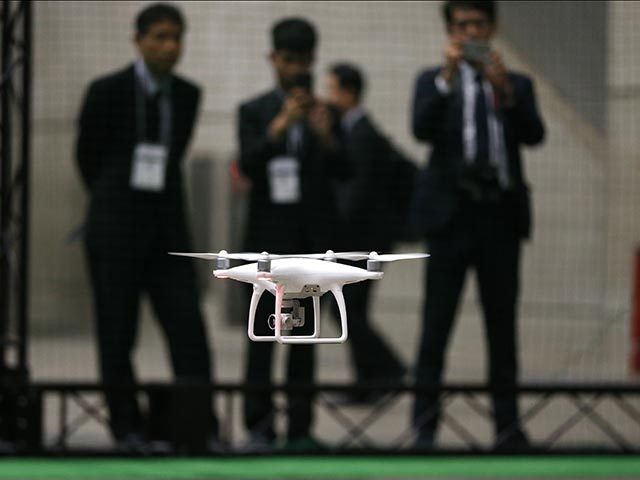The Japanese government is considering changes that would effectively cut China out of the supply chain for its unmanned aerial vehicles, reports indicated on Friday.
China is currently a major supplier of drones and components for Japan, especially for the Japanese coast guard.
“Six people in government and the ruling party familiar with the matter” told Reuters on Thursday that Japan is worried about Chinese threats to its cybersecurity and intellectual property, worries that China could easily cut Japanese supply chains in a time of conflict, and leans toward its close ally America in the growing conflict between the U.S. and China.
Conversely, Japanese officials are acutely aware of their tremendous economic dependence on China, so they are reluctant to provoke a trade conflict.
“China is a big market and it is important for Japan. On the other hand, there are worries that advanced technologies and information could leak to China and could be diverted for military use,” said one of the Japanese officials who spoke to Reuters.
The solution favored by Tokyo appears to involve tightening import rules for drones and drone parts that would not specifically exclude China but would shift drone construction and maintenance for government fleets to domestic suppliers such as the Tokyo Aircraft Instrument Company, which recently unveiled a drone capable of flying through high winds to complete disaster surveying and rescue missions.
“Japan will keep diplomatic ties with China but we will be more carefully respond to sensitive technologies and information,” another Reuters source anticipated.
Japan agreed to import three Global Hawk surveillance drones from the United States in 2015, with the final delivery expected by 2022, but reportedly reconsidered using the large and aging Global Hawks after Iran forces shot one down in 2019.
Japan’s reconnaissance strategy has been shifting toward smaller drones for close-range work, coupled with satellites for big-picture intelligence gathering. Global Hawks are large, non-stealthy, and fly at very high altitudes. The U.S. military is thinking about retiring Global Hawks of the series Japan purchased, raising questions about whether Japan would be able to maintain its fleet.
Japan is notably under-equipped when it comes to armed drones. Proposals have been made to manufacture indigenous armed drones, with one design so large and heavily armed that it was essentially a robot fighter plane. This seems like the sort of project Japan would excel at, but its domestic production of autonomous technologies fell behind as it grew more reliant upon Chinese suppliers. Chinese manufacturers currently control about 70 percent of the worldwide drone market.
In February, the Japanese government launched a program to encourage domestic drone production, timed to coincide with the rollout of 5G wireless networking services. Officials said they were motivated by China’s unhealthy dominance of the drone market, especially after U.S. warnings about the risk Chinese technology poses to information security.
“The fact that almost all drones are Chinese-made is risky,” a Japanese official told Nikkei Asian Review in February.

COMMENTS
Please let us know if you're having issues with commenting.